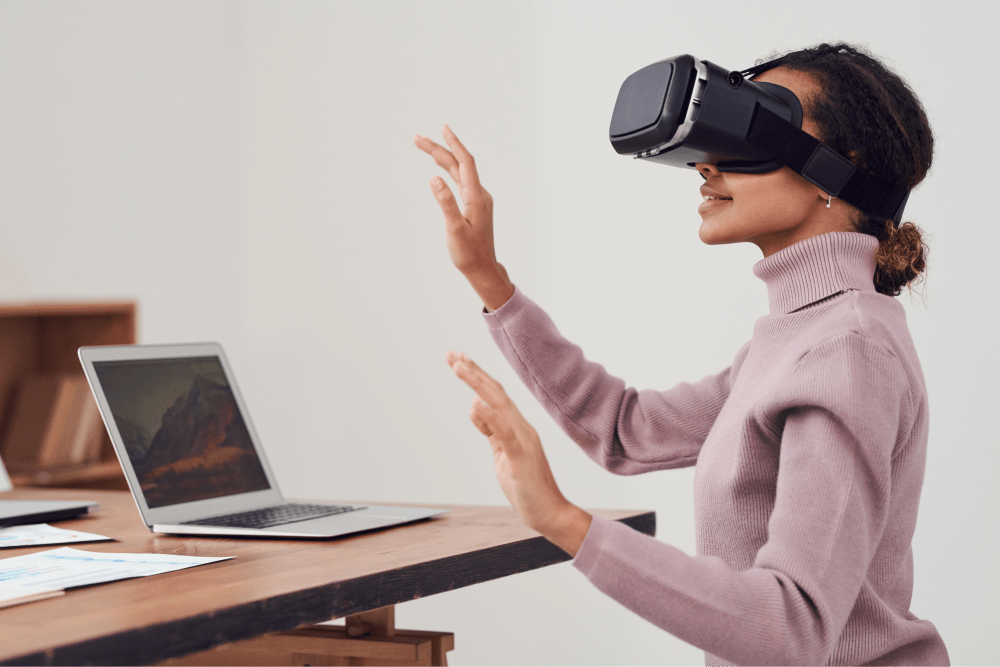The Server Architecture Powering Spatial Computing Experiences


What constitutes the backend of an application?
Most business applications require backend services. The backend of an app is like its brain and engine combined. It's the part you don't see but is essential for the app to work. Think of it as a storage room for information, a decision-maker, and a messenger.
- Storage Room: It stores all the data the app needs, like user profiles, posts, and messages.
- Decision-Maker: It makes sure the app follows the rules and does what it's supposed to. For example, when you log in, it checks if you're the real you.
- Messenger: It helps the app talk to the internet and other services, like sending your pictures to your friends or getting the latest news.
It also helps you prevent piracy since your core valuable algorithm (super-puper AI, for example) can exist on a server that users can't access directly.
However, not all apps require backend services. Simple tools like calculators or single-player games do not need any connection to the internet.
How are 3D/AR Apps different?
The backend of 3D and AR apps shares some similarities with traditional app backends, but it also has distinct requirements and features to support the unique aspects of these apps. It may need to handle spatial data, real-time interactions, and content delivery for virtual objects. It also manages user permissions and supports various devices like AR headsets and mobile devices. It needs to scale for multiplayer experiences and may involve analytics for spatial interactions.
Unlock Success with Premium Software Development
Contact us


Features specific to Spatial Computing Experiences
Persistence in the cloud
While storing user data in the cloud is a common feature for many modern applications, the backend of 3D and AR apps needs to handle spatial data, such as the coordinates and orientations of virtual objects in a 3D space. This data might include information about the user's position, the position of other users in a shared AR experience, or the location of virtual assets within a 3D environment.
Dynamic content loading
3D and AR apps may rely on delivering 3D models, textures, and other assets to the client-side app. For example, when you have a marketplace with an option to see how the product may look in real life, the catalogue of available products may change pretty often. Asking the user to update the app every time a new product is added (or an old one is removed) is not a very friendly user experience.
3D models with materials and textures required to render them and look nice are quite heavy assets. The backend must efficiently manage and serve these assets to ensure fast loading times, smooth rendering, and interactivity.
Users synchronisation
AR apps often require real-time interactions and synchronisation between multiple users in shared AR experiences. The backend must support real-time data updates and collaboration features, allowing users to interact with each other and with virtual objects in a dynamic way. This is applicable when the app allows multiple users to see and interact with the same virtual environment. For example, a popular AR game, Pokemon Go, allows users to catch Pokemon that are placed in the real world. All users around the globe must see the same Pokemon in the same places, and whenever one player catches one of them, all others should not see it anymore. When multiple users need real-time updates from an app, the backend's performance is critical.

Device adaptation
Apps often target multiple platforms, including iOS and Android devices, augmented reality headsets, and virtual reality devices. The backend must support these various platforms and ensure a consistent experience across them.
Different platforms may have varying hardware capabilities. The backend must adapt to these differences in performance and functionality and optimise data transfer and other processes to ensure smooth performance across all supported devices with the best quality possible.
Each platform often has its own software development kit (SDK) and programmatic interfaces, which means different structures and types of data and different approaches. The backend must integrate with these platform-specific tools to ensure a seamless user experience. As well, different platforms may have different requirements for delivering 3D models and assets. The backend must efficiently deliver the appropriate assets for each platform.
On top of that, in multiplayer experiences, ensuring data synchronisation across platforms can be challenging. The backend must manage real-time data updates and interactions between users on different devices while adapting this data to platform-specific requirements on the fly.

In conclusion
The backend of 3D and AR apps is a fundamental component that powers the distinctive and immersive features found in these applications. It operates behind the scenes, managing spatial data, facilitating real-time interactions, and delivering content for virtual elements.
In this dynamic landscape, versatility is paramount as the backend must seamlessly support various platforms, including mobile devices and AR/VR headsets, all while upholding consistent performance and user experiences. As we navigate the complex realm of spatial computing, it's essential to highlight Go Wombat as a distinguished software company offering specialised services in spatial computing development.
Leveraging our expertise, we contribute to the robust backend infrastructure required for 3D and AR apps. Key functionalities such as cloud-based data storage, on-the-fly content updates, and seamless adaptation to different devices are essential for creating successful spatial computing experiences. Addressing these challenges requires careful planning, a deep understanding of each platform's intricacies, and a flexible backend architecture that can adapt to the evolving landscape of 3D/AR hardware and software platforms. As technology continues to evolve, the backend will continue to play a pivotal role in shaping the future of 3D and AR apps.
Unlock the potential of spatial computing with Go Wombat. Schedule a consultation today for expert guidance in building strong backend infrastructures for your 3D and AR apps.
How can we help you ?





